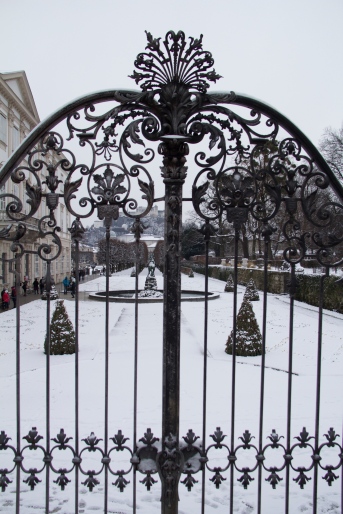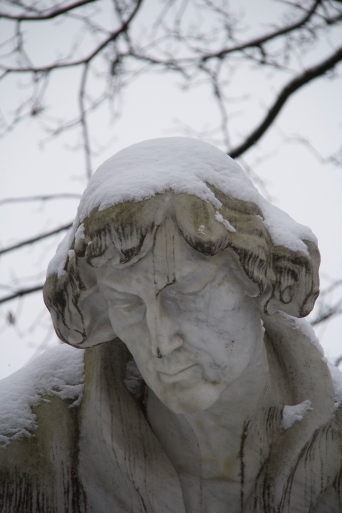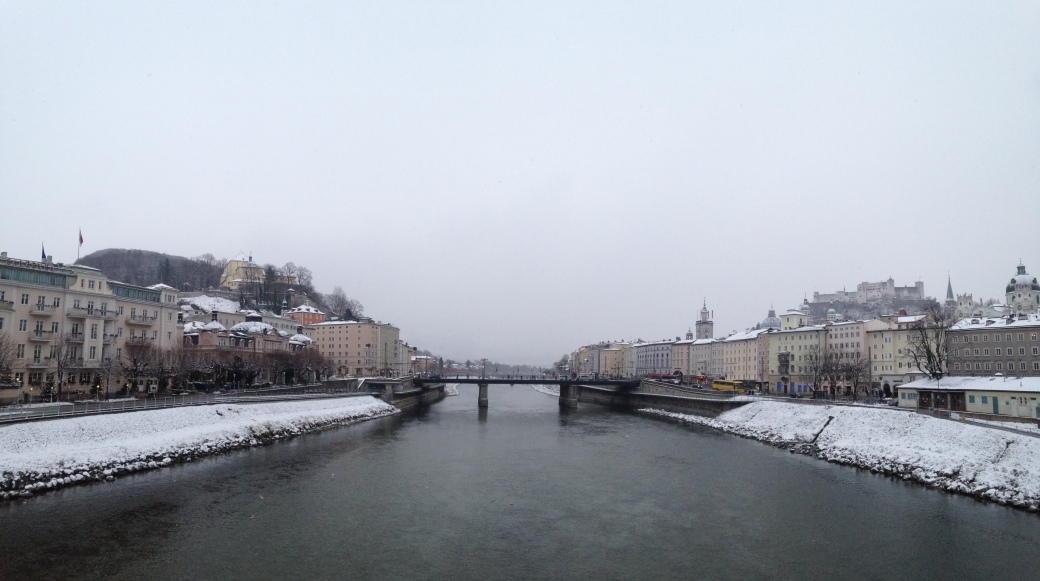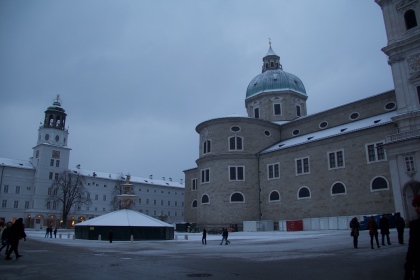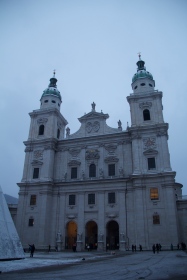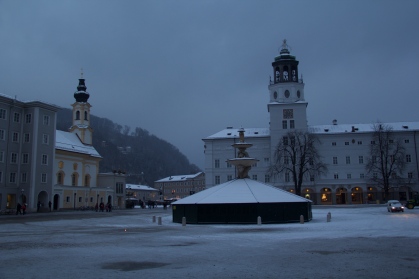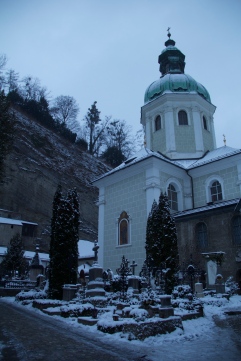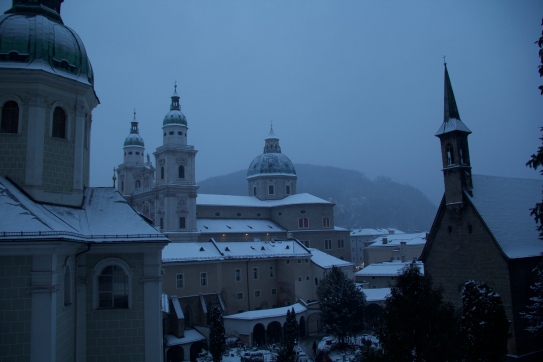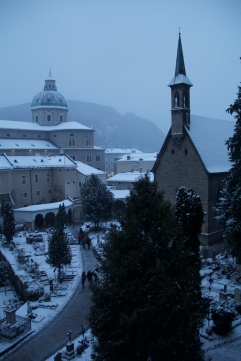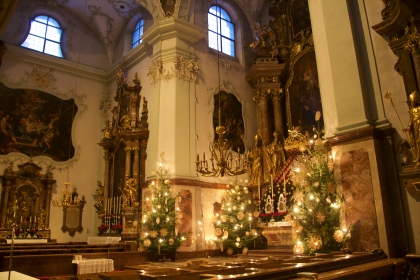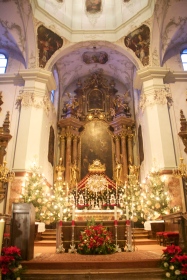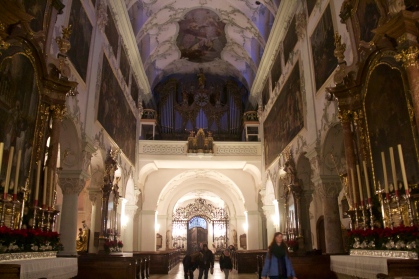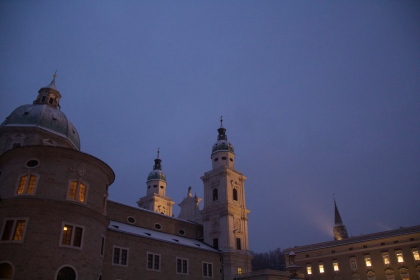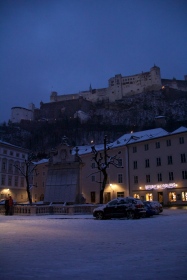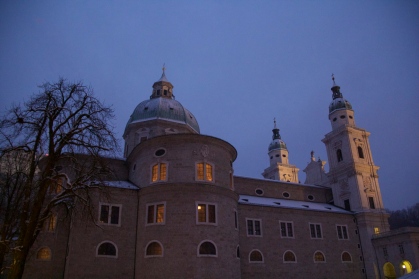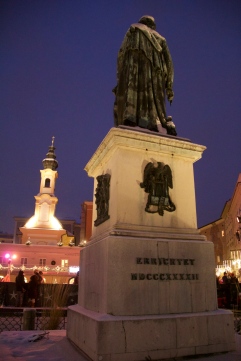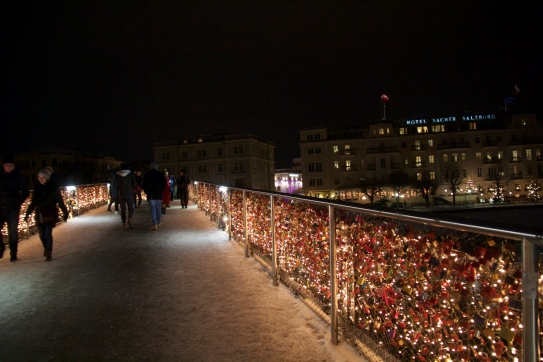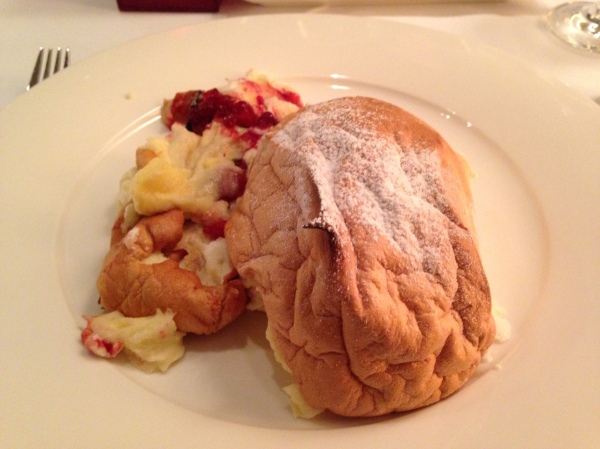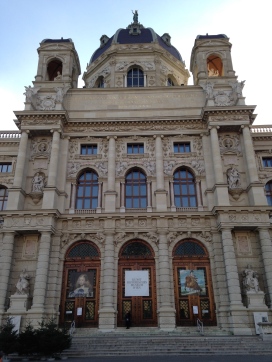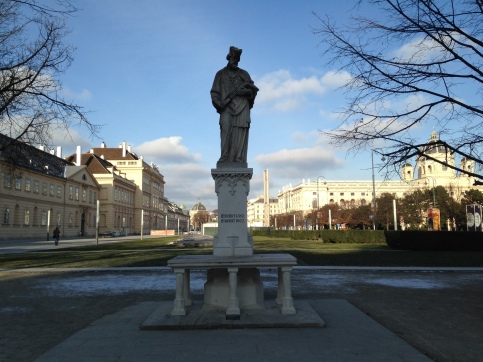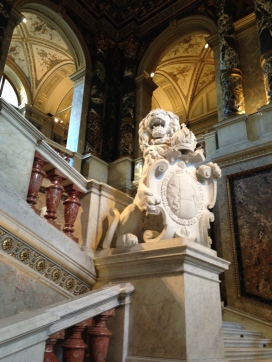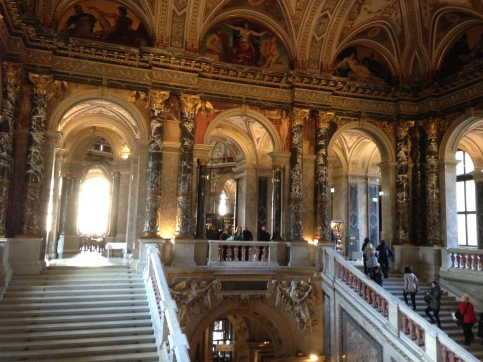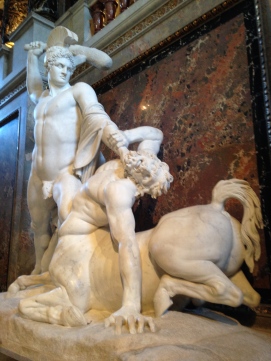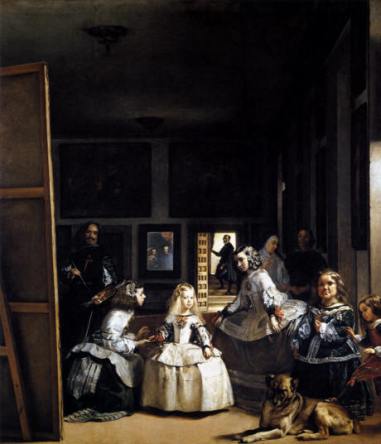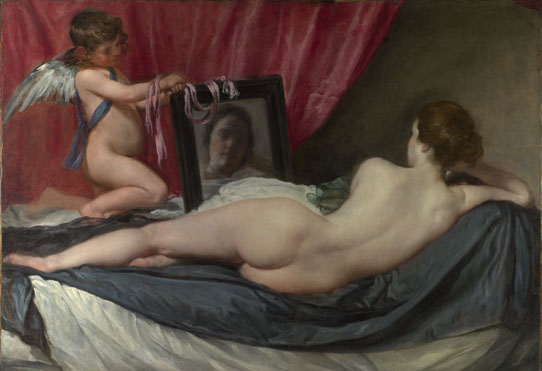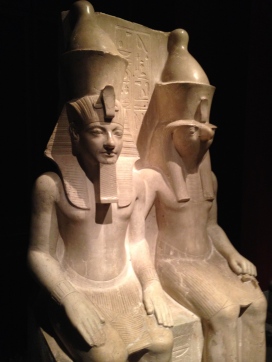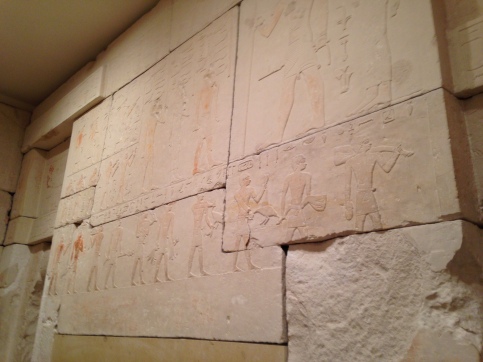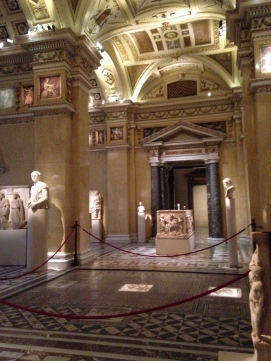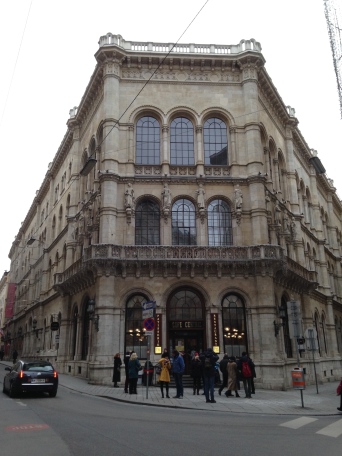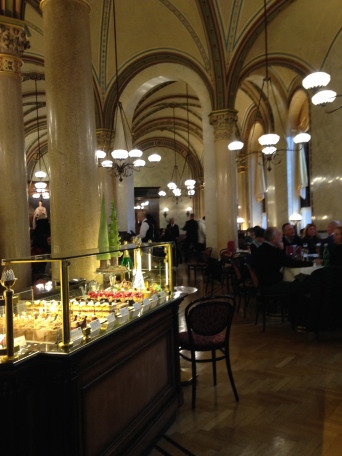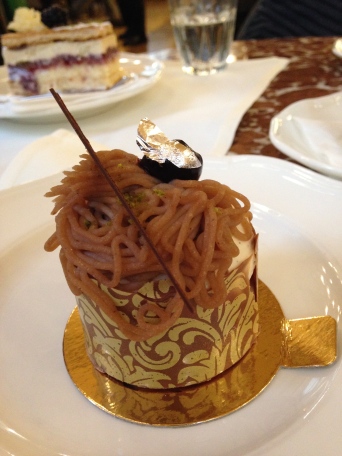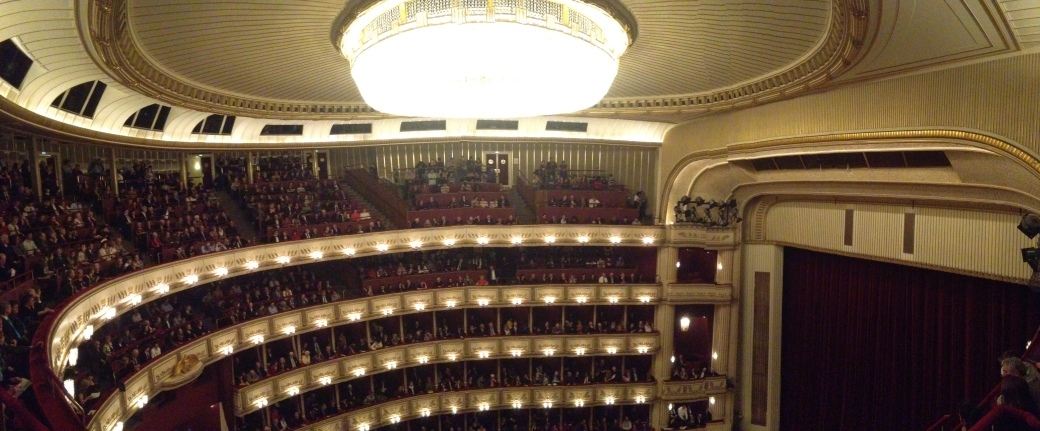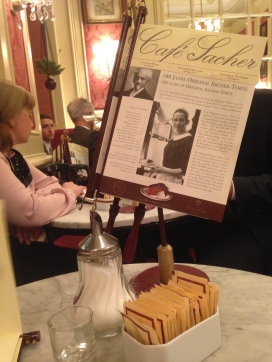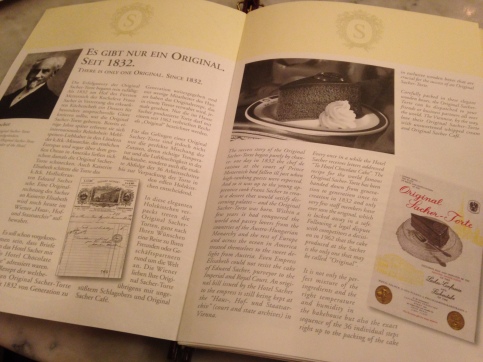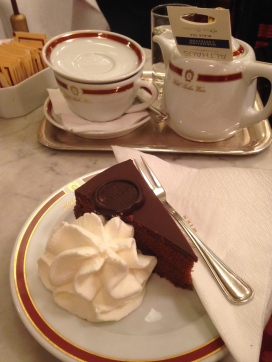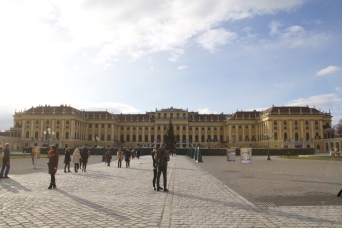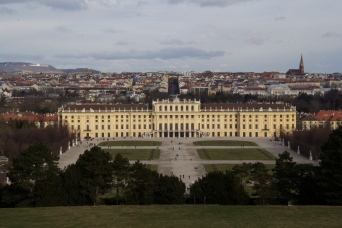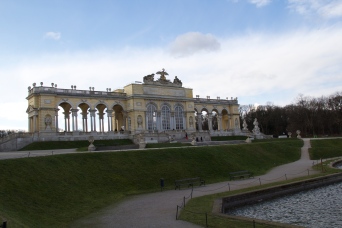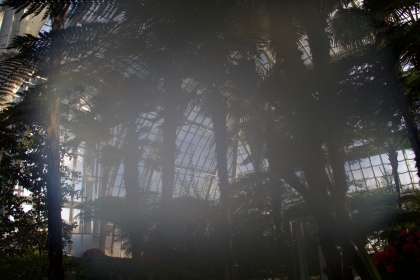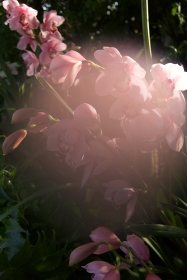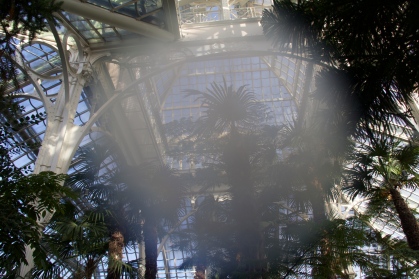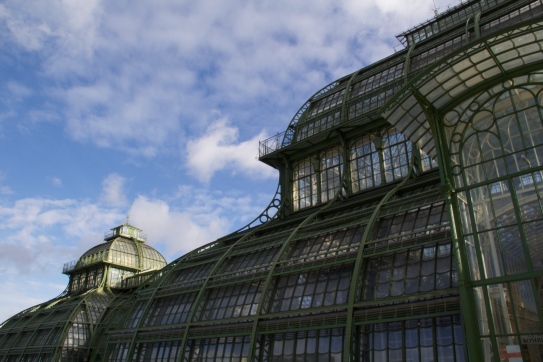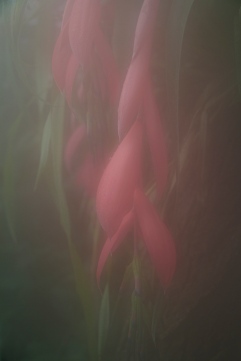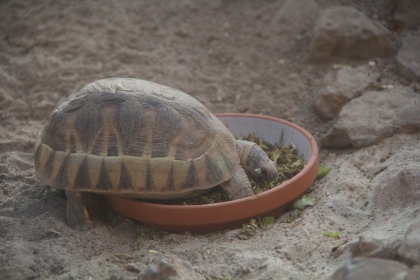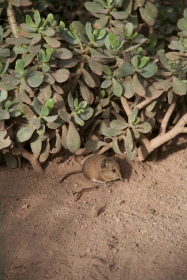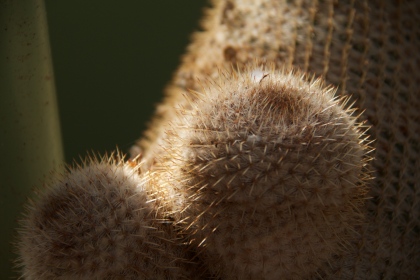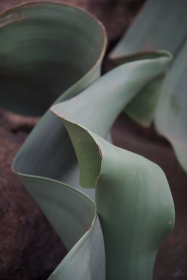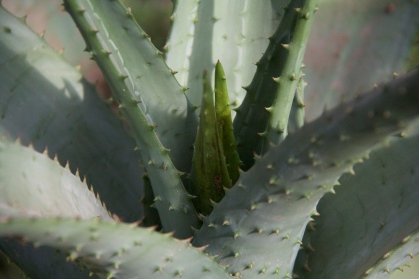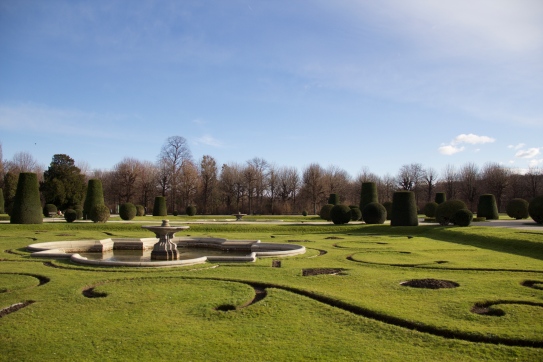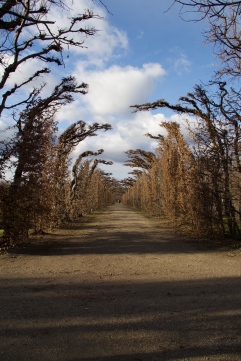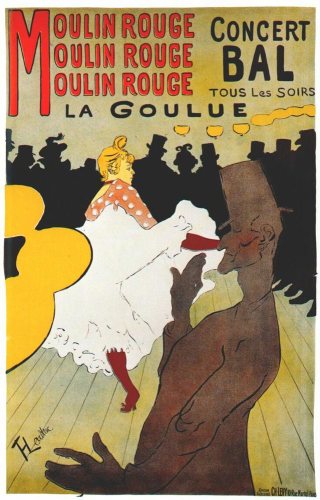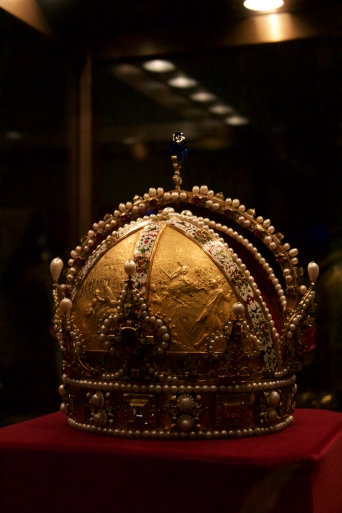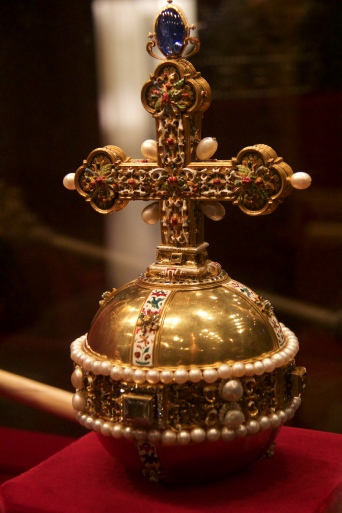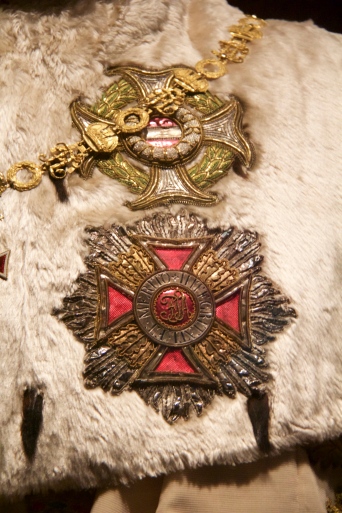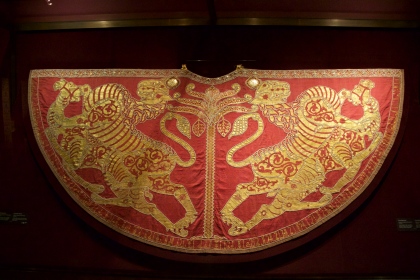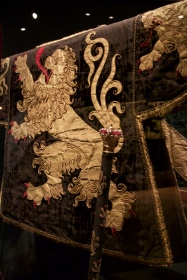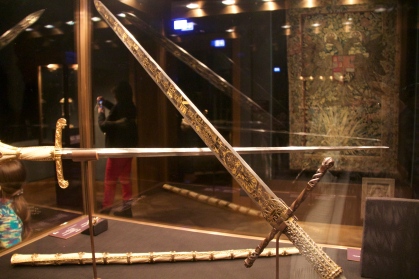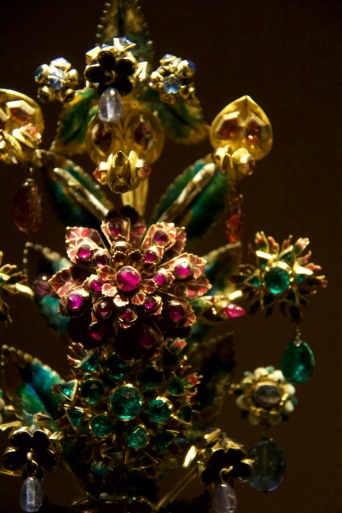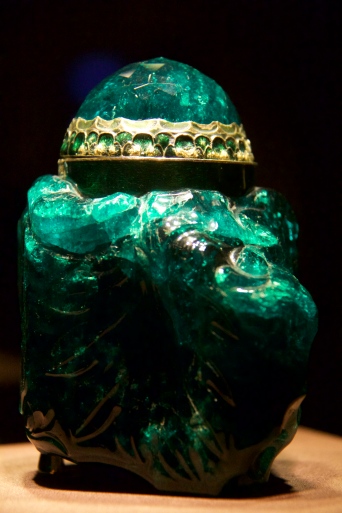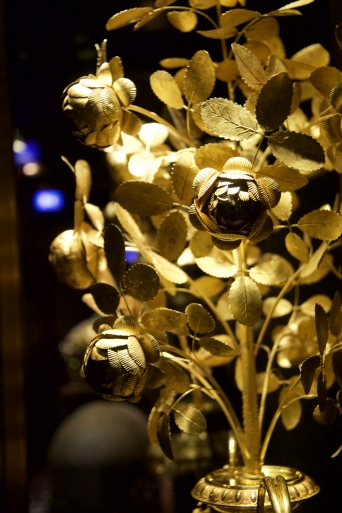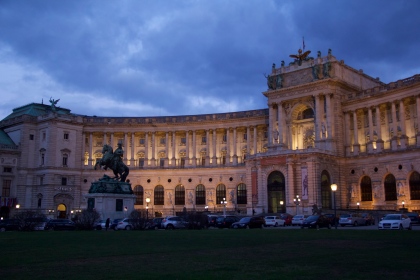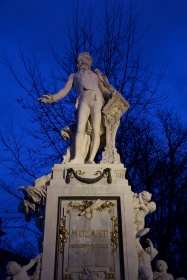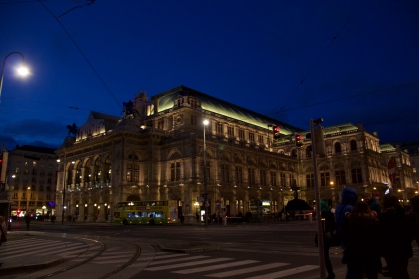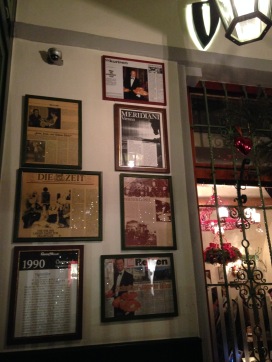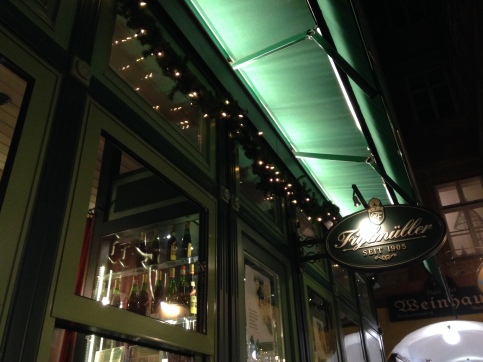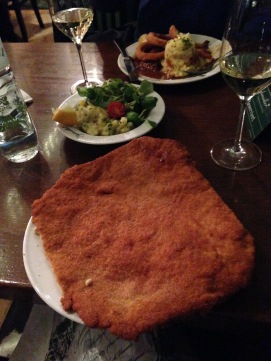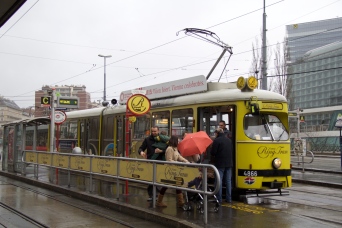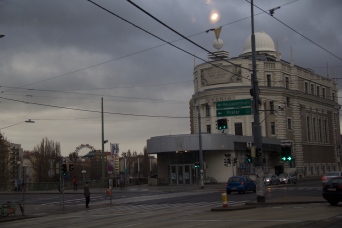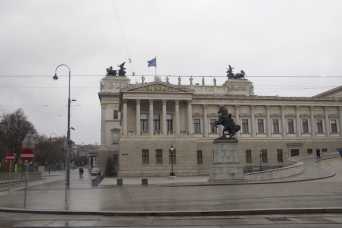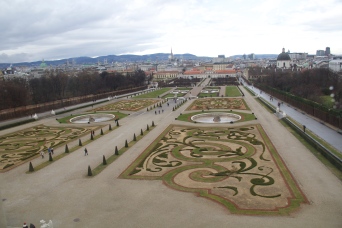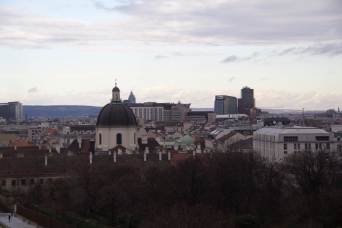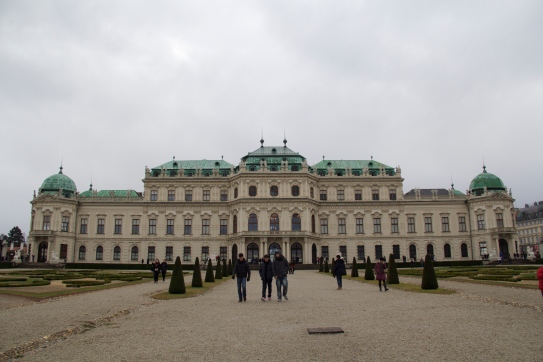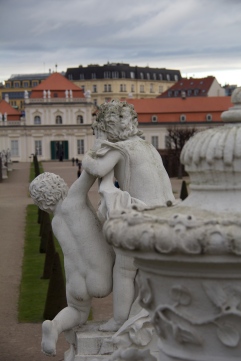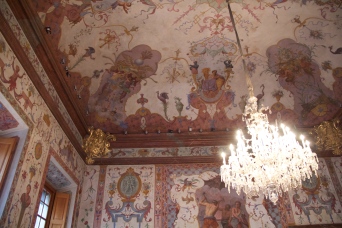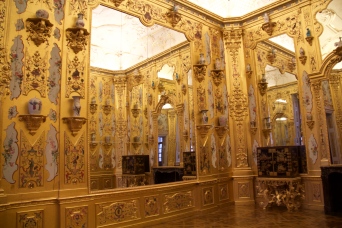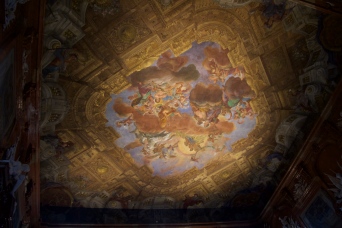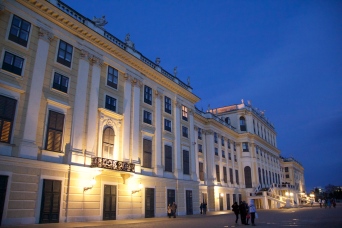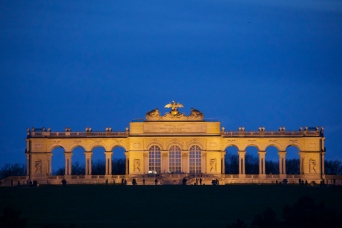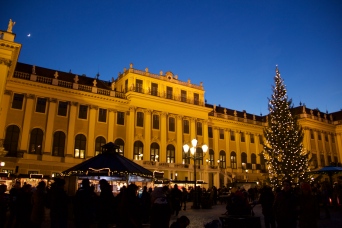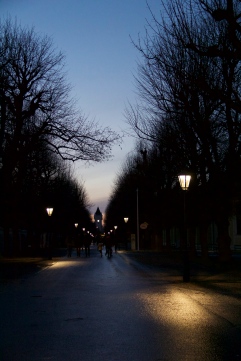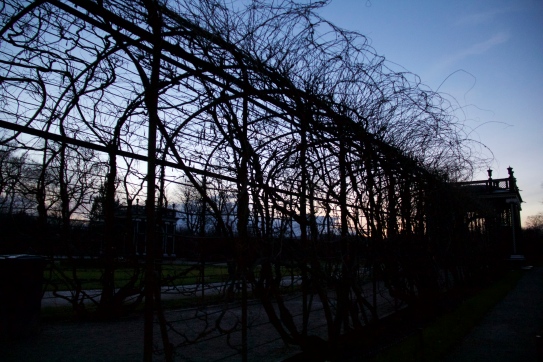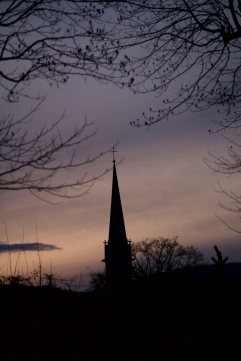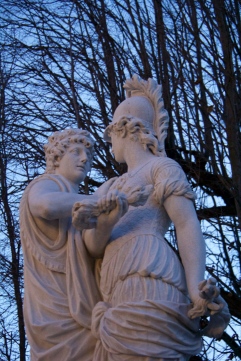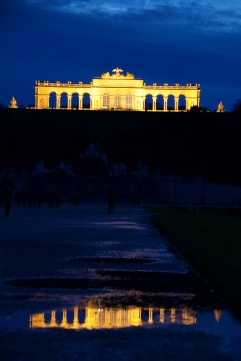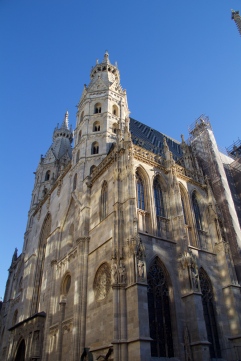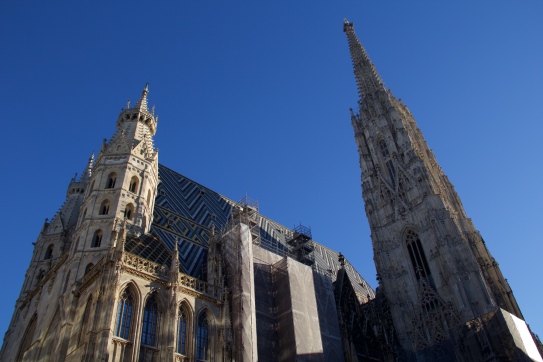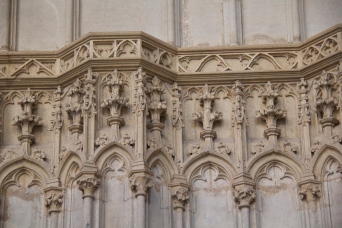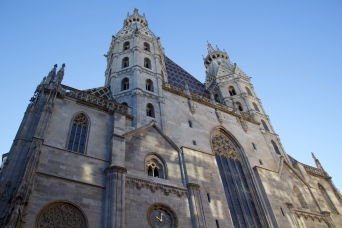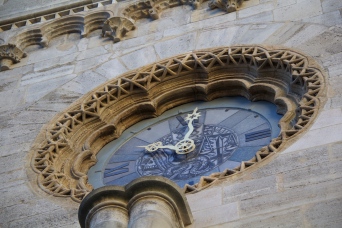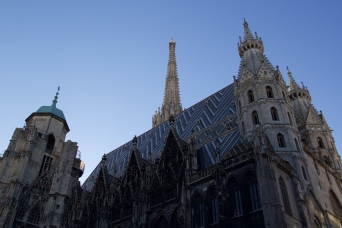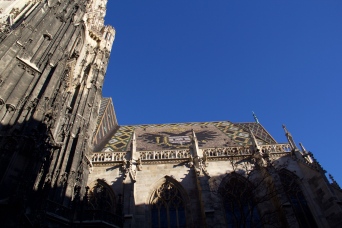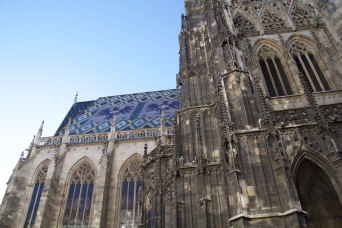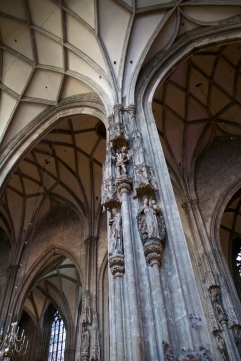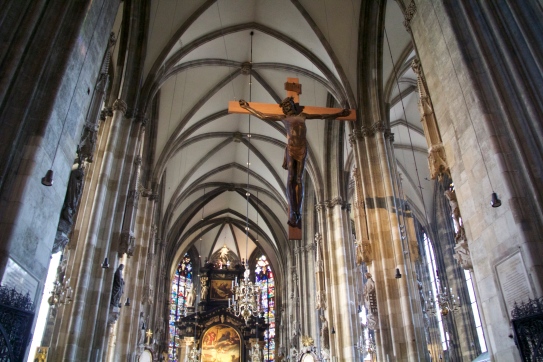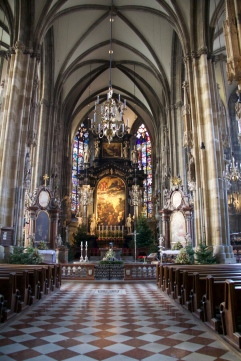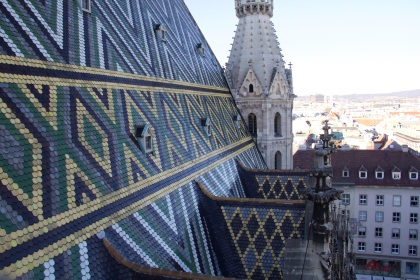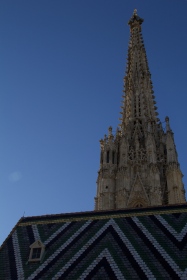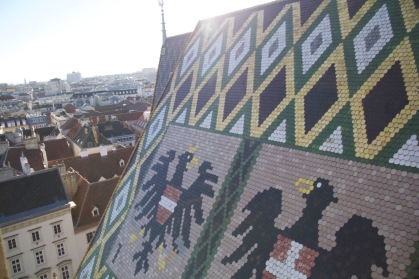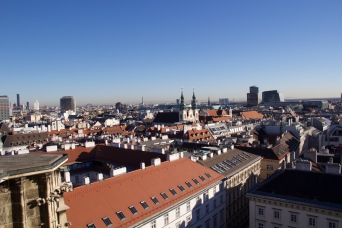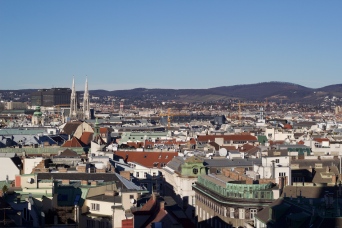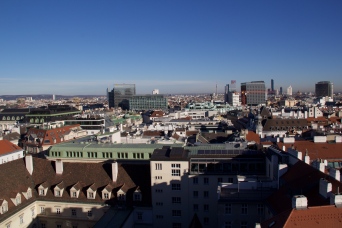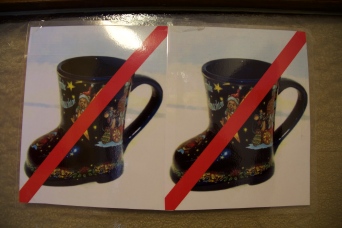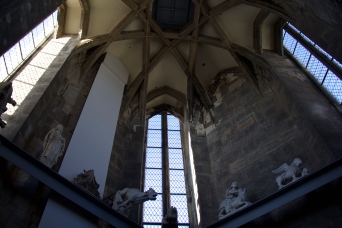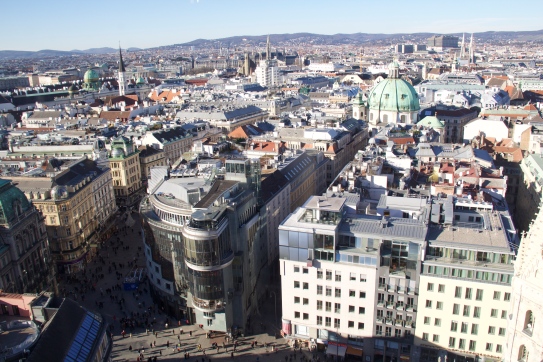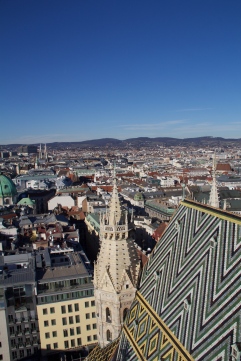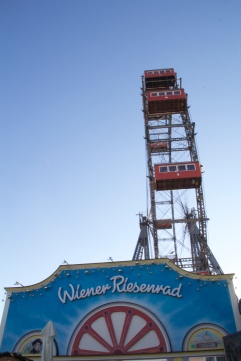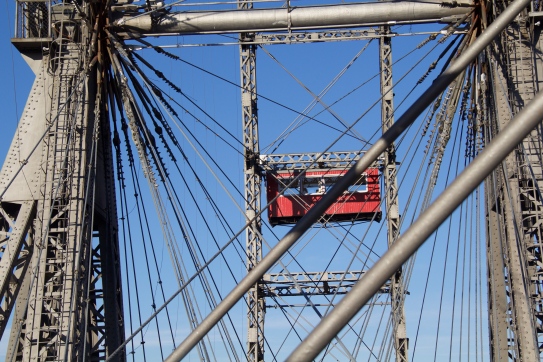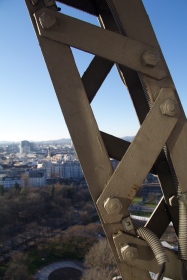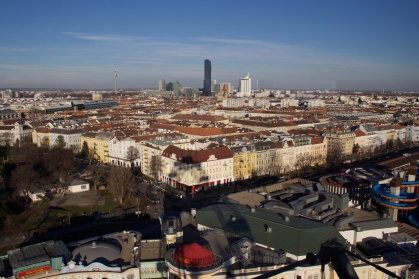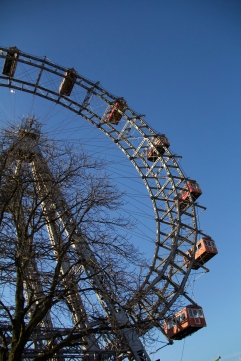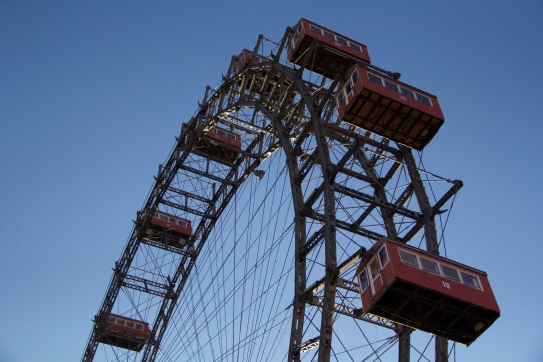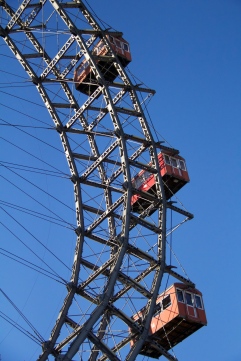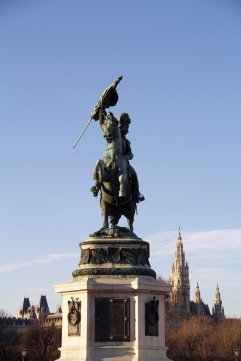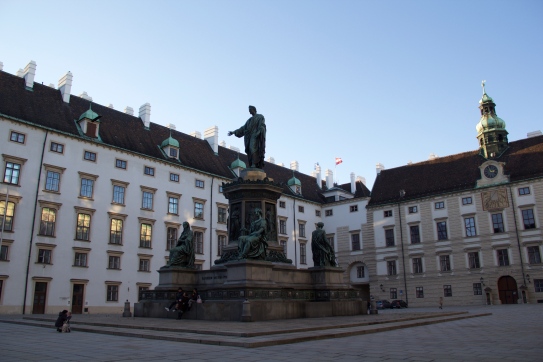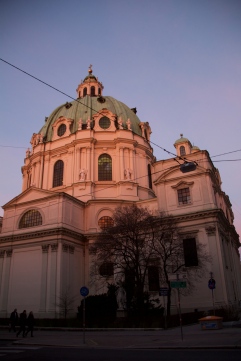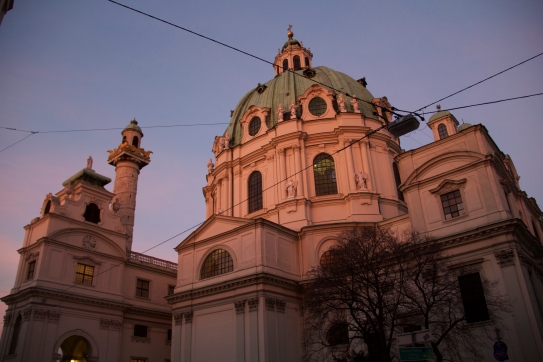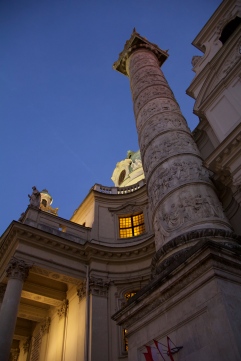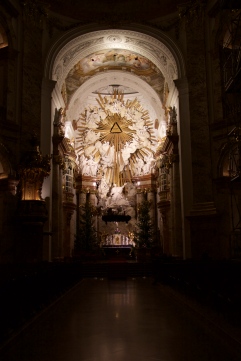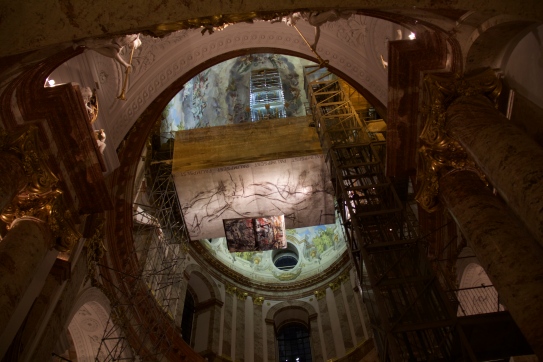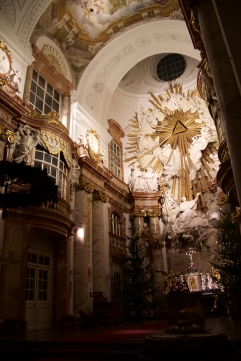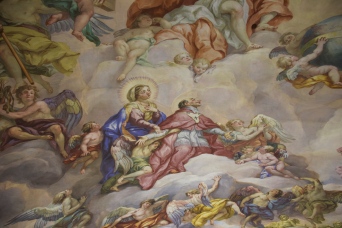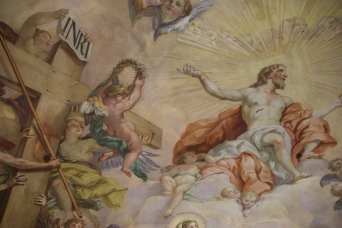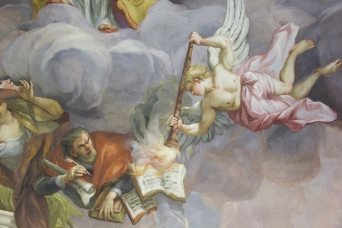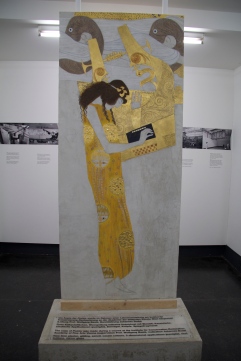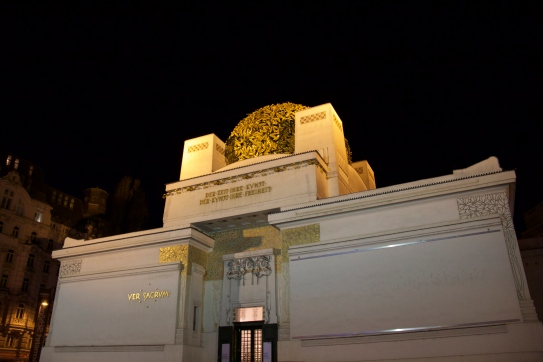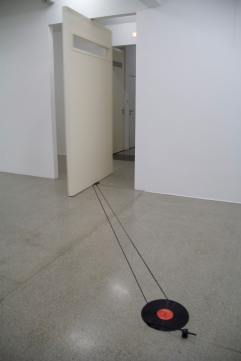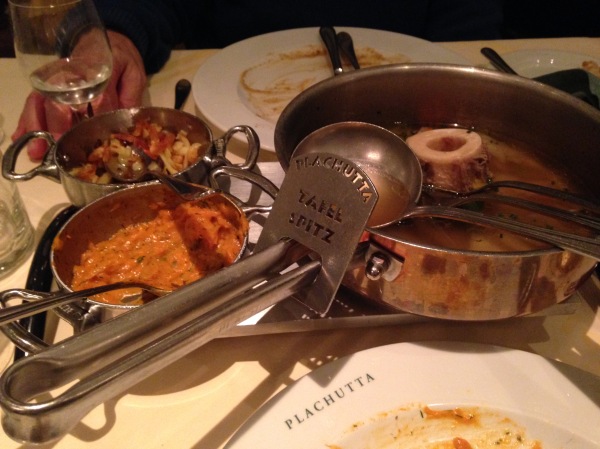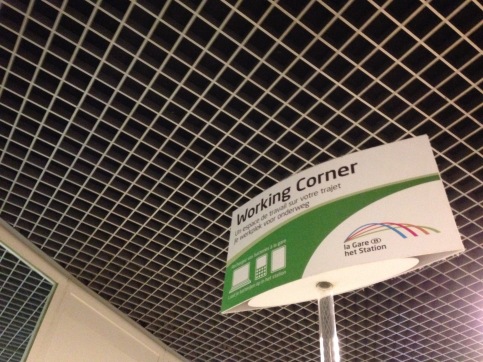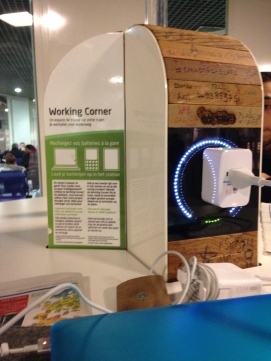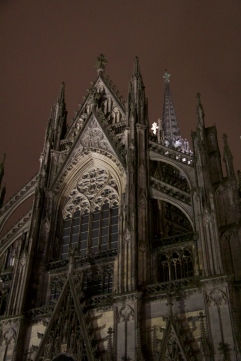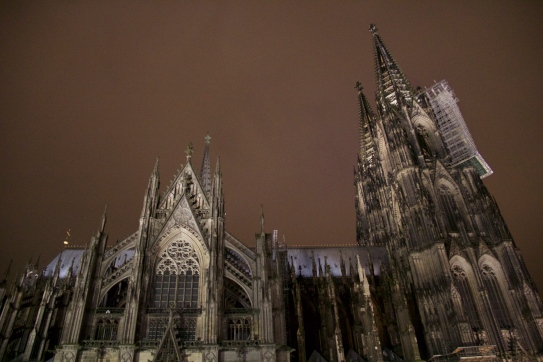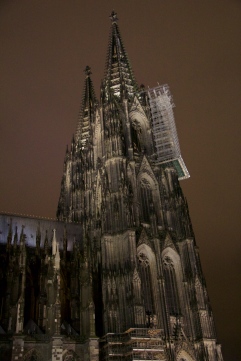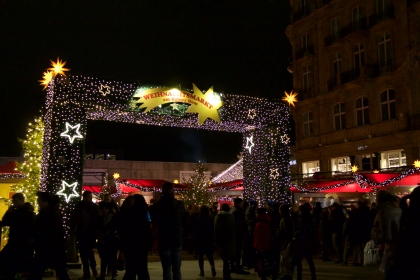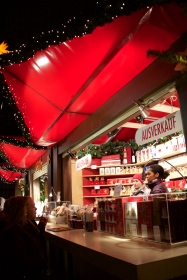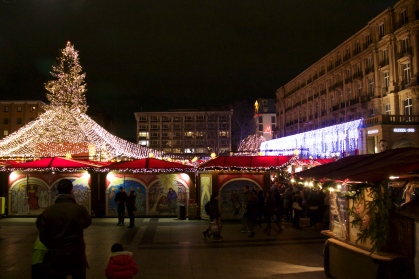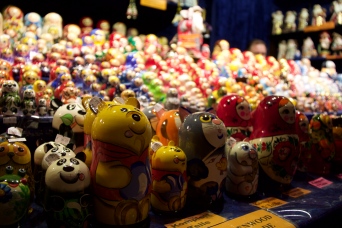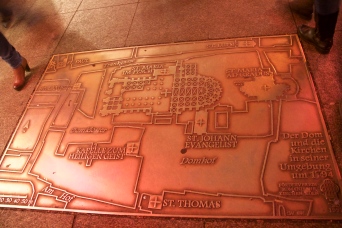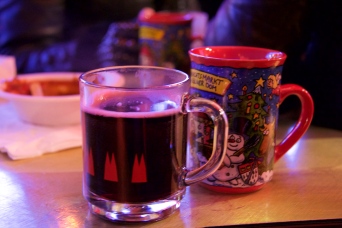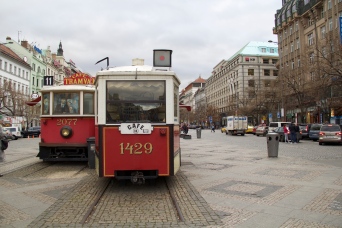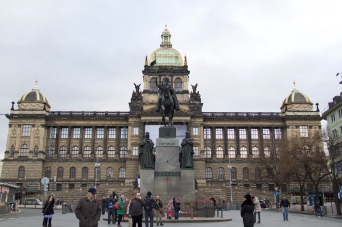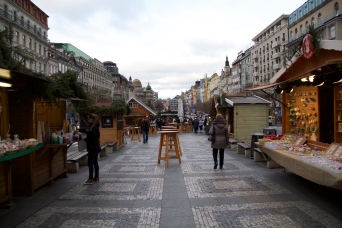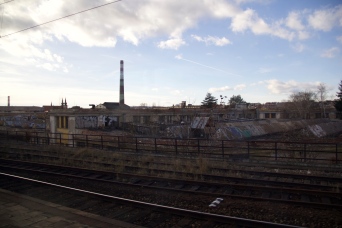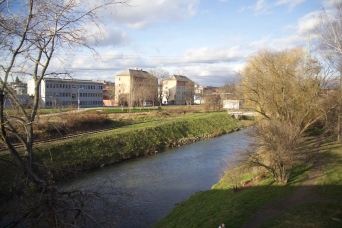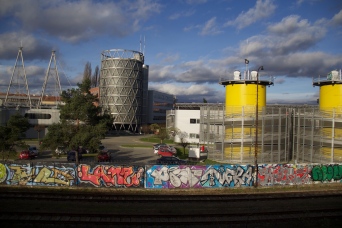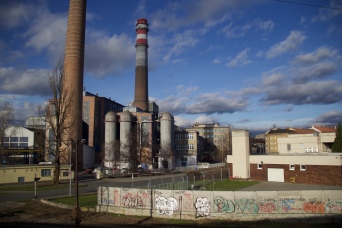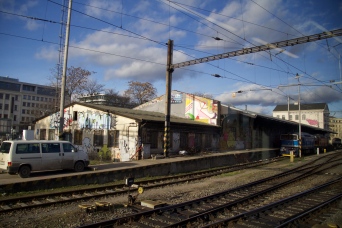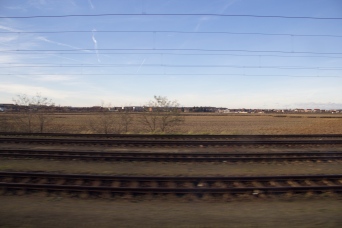I would argue that one of the few perks of turning 16 was being able to sing “Sixteen Going on Seventeen.” Now that I’m a twenty something that doesn’t really work as well anymore. Now I don’t know about you, but my family is one of those families that is obsessed with watching The Sound of Music. We think it’s a movie that never gets old. I have seen the movie more times than I can count, and one of my more distinctive childhood memories is of one cousin who liked to continuously rewind and watch Julie Andrews tripping in the middle of singing “I Have Confidence.” GIF below for your viewing pleasure. Welcome to my childhood.

So because we were going to Salzburg, my Dad and I were more or less required to go on a Sound of Music tour. Or at least that’s what I thought. My Dad might have had a different opinion on that score. I admit I even rewatched the movie before our holiday. I hadn’t seen the movie in years so a lot of the things that I had difficulty understanding as a kid (literally anything to do with the Nazis) now made a bit more sense.
But The Sound of Music tour wasn’t actually the first thing we did that day. We booked a combined tour with Viator that involved going to the region’s salt mines. And when I say “region” I really mean Germany. So, early in the morning we hopped on a bus and crossed over into Germany. Now let me just say that it was very cold in the morning (this fact becomes more relevant later on). If memory serves me correctly, it was around -10°C (14°F) so our tour bus was feeling really nice and cosy. After a short bit of driving, we stopped on one of the local mountains to stretch our legs and admire the view. It also happens to be the same mountain that Hitler’s Eagle’s Nest is built on. The Eagle’s Nest was a 50th birthday present to Hitler from the Nazi party and many of the buildings that were built lower down on the mountain were the homes of other high ranking officials. The Eagle’s Nest is inaccessible during winter but we could JUST make it out on the top of the mountain (right picture on the top row).
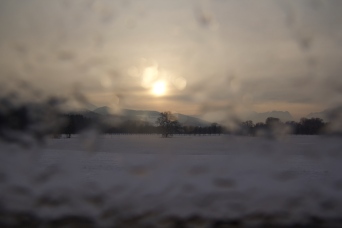

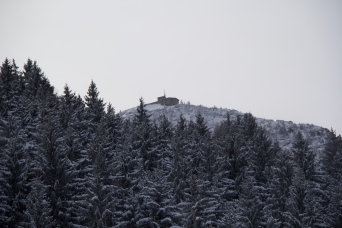
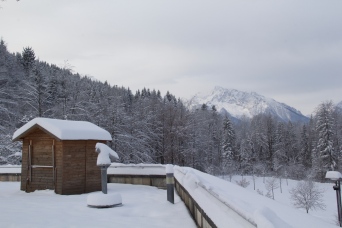
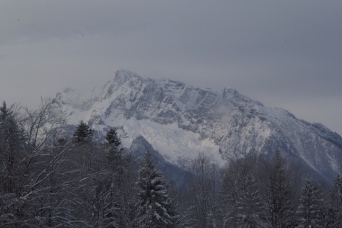
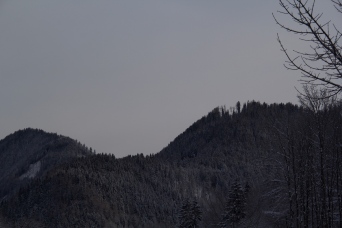 When we had finished walking around we were driven to a nearby town called Berchtesgaden and allowed to wander around before climbing back into the bus to go to the town’s salt mines.
When we had finished walking around we were driven to a nearby town called Berchtesgaden and allowed to wander around before climbing back into the bus to go to the town’s salt mines.
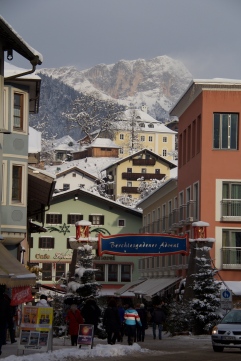
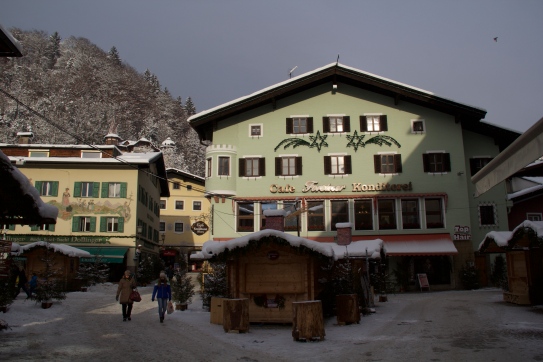

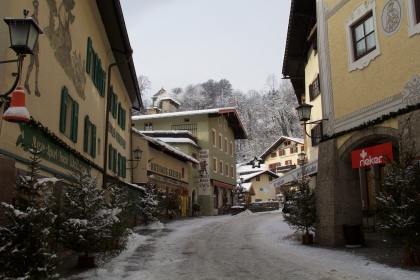
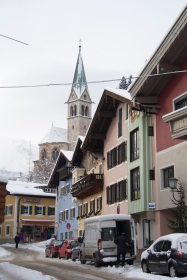
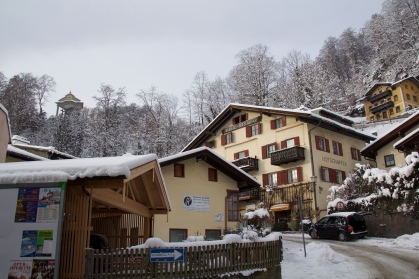 The salt mine tour was a ton of fun. Unfortunately the mine doesn’t allow photography, but you can get a good idea of how everything looked on Google Images. The first thing we had to do for the tour was to suit up into special overalls. Once everyone was ready we took a train down into the mines where we were led on the actual tour. According to our guide, the area where the mine is used to be under the ocean. Once the mountains formed and rose out of the ocean they created a small salty lake. Over time the lake evaporated, leaving the salt behind. The composite rock that remains contains on average a 50% salt content.
The salt mine tour was a ton of fun. Unfortunately the mine doesn’t allow photography, but you can get a good idea of how everything looked on Google Images. The first thing we had to do for the tour was to suit up into special overalls. Once everyone was ready we took a train down into the mines where we were led on the actual tour. According to our guide, the area where the mine is used to be under the ocean. Once the mountains formed and rose out of the ocean they created a small salty lake. Over time the lake evaporated, leaving the salt behind. The composite rock that remains contains on average a 50% salt content.
The mine has been operating continuously since 1517 and still produces several tons of salt a day. Right now it’s hard to believe that for such a big operation they only need 100 people to keep everything running smoothly.
The way they currently mine the salt is by drilling a test shaft see if there is enough salt to make further drilling worthwhile. If the salt content is high enough, a tunnel is drilled and then a hollow pocket is created using fresh water. This pocket is then filled with fresh water, which soaks up the salt and creates brine. The brine is then taken out of the pocket and boiled. Then voilà! You have salt.
Overall I had a really great time on the tour. The content was interesting and things were spiced up when we were allowed to take slides down to different levels of the mine and by a lake that we crossed by boat. The tour took about two hours and once we were done we hopped back on the train and rode it up to the surface. And when we got there it was snowing. Remember how I said it was cold? This was the result. Some enterprising kids had even built a snowman. Carrot nose and all.
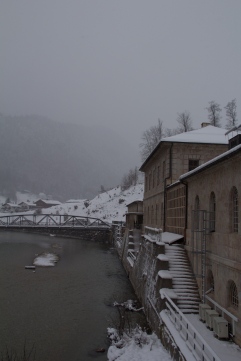
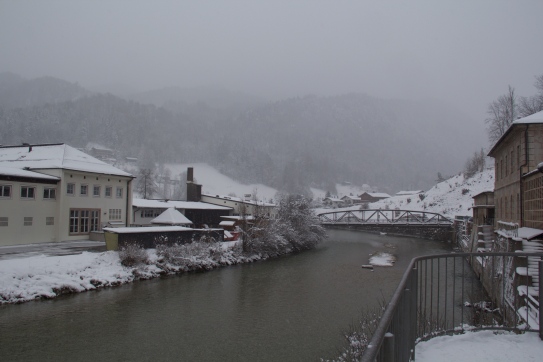
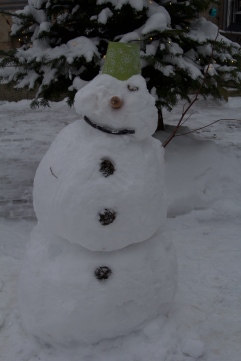 After that we went back to Salzburg and had about an hour to kill before The Sound of Music Tour. When we finally did get on the bus it was packed. I think at one point our tour guide said that it was a 72 person bus and I’m pretty sure that every seat was full. To my delight, there were actually a number of kids on the bus. I was wondering if the current generation also watches The Sound of Music on repeat and based on the singing seven year old sitting across from me the answer is yes. She knew every word to the lyrics. Thankfully not everyone else was really up for singing the whole time and most of us were content to just listen to The Sound of Music soundtrack.
After that we went back to Salzburg and had about an hour to kill before The Sound of Music Tour. When we finally did get on the bus it was packed. I think at one point our tour guide said that it was a 72 person bus and I’m pretty sure that every seat was full. To my delight, there were actually a number of kids on the bus. I was wondering if the current generation also watches The Sound of Music on repeat and based on the singing seven year old sitting across from me the answer is yes. She knew every word to the lyrics. Thankfully not everyone else was really up for singing the whole time and most of us were content to just listen to The Sound of Music soundtrack.
Now there are a few things you should know about The Sound of Music. The first is that most of the indoor scenes took place in Hollywood. This means that pretty much all of the things we were going to see on the tour were outdoor locations. And to top things off it was still snowing.
So, first things first. We went to the lake that Julie Andrews and all of the children famously fall into.
It was here that we learned that there were actually two houses used when filming the exterior of the von Trapp house. The exterior shots of the grounds were all done at this location while the house itself (the one you can see behind Captain von Trapp throughout this scene) is actually a completely different house. Unfortunately the snow didn’t really make for good pictures, but the house to the left is the one with the outdoor scenes and the lake (the lake is in the very front of the picture covered in snow), while the two pictures on the right show the house that was actually depicted in the movie. The yellow wall you can see is the wall Maria runs along when she’s singing “I Have Confidence.”
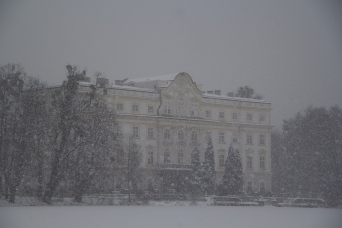

 So now you’re probably thinking that the gazebo where Liesl famously sings “Sixteen Going on Seventeen” would be close to this first lake property. Well it used to be. The land that the gazebo rested on was bought by an American company and walled off. If I remember the numbers correctly, Salzburg receives 11 million tourists every year and 20% of them come JUST for The Sound of Music. Now with that many people coming through every year not everyone is really going to be daunted by a wall. So the company experienced problems with people hopping into private property and generally making themselves known by poorly singing “Sixteen Going on Seventeen,” especially when they’ve been helped along with some glühwein, or mulled wine. So eventually the company decided to have the gazebo moved in order to make everyone happy. Hellbrunn Palace was eventually chosen as the final destination, so it was there that we could finally see the gazebo.
So now you’re probably thinking that the gazebo where Liesl famously sings “Sixteen Going on Seventeen” would be close to this first lake property. Well it used to be. The land that the gazebo rested on was bought by an American company and walled off. If I remember the numbers correctly, Salzburg receives 11 million tourists every year and 20% of them come JUST for The Sound of Music. Now with that many people coming through every year not everyone is really going to be daunted by a wall. So the company experienced problems with people hopping into private property and generally making themselves known by poorly singing “Sixteen Going on Seventeen,” especially when they’ve been helped along with some glühwein, or mulled wine. So eventually the company decided to have the gazebo moved in order to make everyone happy. Hellbrunn Palace was eventually chosen as the final destination, so it was there that we could finally see the gazebo.

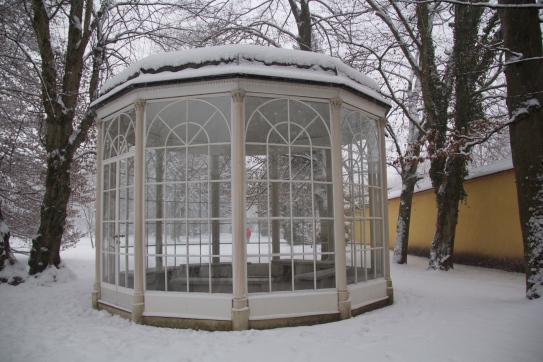
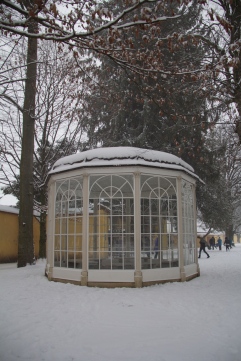 Now you probably can’t tell from the pictures, but the gazebo isn’t actually that large. It’s definitely not large enough to contain the dance number that happens in “Sixteen Going on Seventeen.” So this gazebo was only used in outside shots. For the dancing, they danced in another gazebo. Apparently Liesl, or Charmian Carr, actually ended up putting her foot through one of the glass window panes and was given a BandAid before being told to continue dancing. After all, “the show must go on.” All of this just makes the dancing that much more impressive.
Now you probably can’t tell from the pictures, but the gazebo isn’t actually that large. It’s definitely not large enough to contain the dance number that happens in “Sixteen Going on Seventeen.” So this gazebo was only used in outside shots. For the dancing, they danced in another gazebo. Apparently Liesl, or Charmian Carr, actually ended up putting her foot through one of the glass window panes and was given a BandAid before being told to continue dancing. After all, “the show must go on.” All of this just makes the dancing that much more impressive.
And it was still snowing. Our tour guide was talking to a family sitting towards the front of the bus and told us that apparently one little girl was pretty satisfied. Why you might ask? Well she had asked Santa for snow. When she was asked if she had really been that good this year she responded “Yes” without hesitation. We then asked her to just wish for a little less snow next time.
Because of the weather, we encountered a few hang ups in getting to our next destination. Salzburg is apparently a one way city so when accidents happen they stop the whole city. After encountering two accidents, and even being stuck behind a bicyclist, most of our attempts to get out of the city were being thwarted. They even had to shut down the highway so that they could finally get someone out there to clear the snow.
So, while we waited for things to get sorted out driving wise we were told the real von Trapp story. Captain von Trapp was in fact a widower with seven children and had been a captain in the navy. Now something that I had never actually thought about was the navy part of that sentence. Austria as it currently exists does not have a coastline. BUT it did before World War I, which is how Captain von Trapp ended up working in a submarine.
Maria on the other hand was not a novice at an abbey. She was a step below that. Apparently in order to be a novice you must take a two year vow of silence in order to see whether you are capable of taking a lifelong vow of silence. Maria wasn’t quite at that point. She was however working to finish up her teacher’s license when Captain von Trapp asked the Mother Superior if she could recommend a teacher. The Captain’s wife had died of scarlet fever and his daughter had also suffered from it. While it had killed his wife, it had spared his daughter, also named Maria, although it had made her feeble due to a weakened heart.
So Maria was sent to the von Trapps. There was in fact a Baroness in the picture…but she was the housekeeper. Apparently the children also had governesses but because of their aristocratic upbringing were kept separated by age group. Maria found this strange and started to take the children out as one large group. They sang Christmas songs, built Christmas wreaths, hiked through the forrest, etc. It was the first time the children had been together since their mother had died. Which means that…
The captain received a letter from one of his children telling him to come back and marry Maria so that she could stay with them forever. The captain on the other hand had been on holiday with a certain Princess Yvonne (the equivalent of the movie’s baroness). So the captain left the holiday early (effectively cutting off any engagement plans) and returned home. Here he confronted Maria. He asked what had been going on and proposed oh so romantically by saying “The children think we should get married. What are your thoughts on that?” Maria, who was in fact very religious, went back to the abbey to ask the Mother Superior for her thoughts. The Mother Superior thought that it was God’s will that she marry the Captain and help them become a family again. So Maria returned to the von Trapp residence. Here she encountered the Captain in the library. He asked her what her thoughts were and apparently she burst into tears before saying something along the lines of “I guess I have to marry you.” Talk about faith in God.
Thankfully they had a very happy marriage. But they encountered one major problem. The bank where Captain von Trapp had stored his wealth (as well as the significant wealth of his late wife) went bust. Because he was a very kind man he withdrew his remaining wealth and invested it in another branch of the bank, hoping that it would help sustain the bank. No such luck. So the von Trapps fell from spectacular wealth into poverty. They let go of their servants and moved into the servants quarters before renting out the rooms of their home.
One guest happened to be an opera singer who heard the family singing. The singer was there for the Salzburg Music Festival and managed to enroll the family into a locals competition where the von Trapps won. Due to their success at the festival, they started to travel around Europe and make money through concerts. They were even invited to go and tour in the United States, which they turned down until…
Hitler invaded Austria. Now the Captain was not actually wanted for active duty. When he had been a submarine captain exhaust systems hadn’t been perfected. This meant that all of the exhaust that was theoretically supposed to leave the submarine was instead recirculated inside the submarine, causing many men, including the Captain, to develop lung cancer. Anyways, the family knew that they did not want to stay in Salzburg under Hitler’s rule and managed to use their US connection to get a gig in the United States. They unglamorously escaped Austria via train and boat.
Once in the United States, they settled in Stowe, Vermont. Maria then had their tenth child in the United States which allowed the whole family to stay.
Maria eventually wrote a book about her experiences. Being a religious woman, she wanted to book to show the importance of perseverance and faith. Broadway apparently offered to buy the rights to the book and she refused, thinking it wasn’t in line with her reasons for writing the book. She did however sell to a German producer for a few thousand dollars, who later sold to Broadway for over a million dollars. Maria to her credit didn’t seek any of this money. Maria herself apparently liked the movie but her one quibble was with the portrayal of the Captain. Apparently he really was a very nice man so she didn’t approve of his aloof movie persona.
Now a few more Sound of Music facts before I get back to the tour. A large number of people in Salzburg actually haven’t seen The Sound of Music. Now considering the sheer number of Sound of Music tour buses and tourists that come into the city you might be wondering why that is. It’s because a German version of The Sound of Music wasn’t made until much later. Apparently listening to the songs in German is not a recommended activity.
Lastly, The Sound of Music actually hurt the careers of everyone in the movie other than Christopher Plummer, Captain von Trapp. Although Julie Andrews was nominated for Oscars for both Mary Poppins (which was released a year prior to The Sound of Music) and The Sound of Music, she was never quite able to shake the image of the singing woman who looks after children. None of the children in the movie ever managed to make it big either.
But back to the tour. So having almost literally climbed every mountain and forded every stream we eventually arrived at the town of Mondsee. You’re probably wondering what we’re doing there. Well it has the church where Maria and the Captain get married.
Salzburg used to be a very important religious center so there are plenty of churches in Salzburg. The problem is that none of the 50+ churches in Salzburg were willing to have Hollywood producers film inside them. In fact, none of the church scenes in the movie are filmed in Salzburg EXCEPT when Maria leaves the abbey to go to the von Trapp house. Mondsee on the other hand was thrilled to have Hollywood visit their small town. So the famous wedding scene was filmed inside their church.
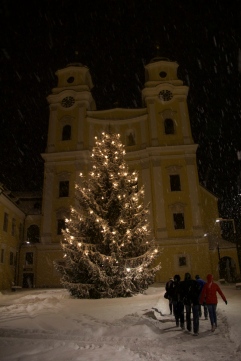
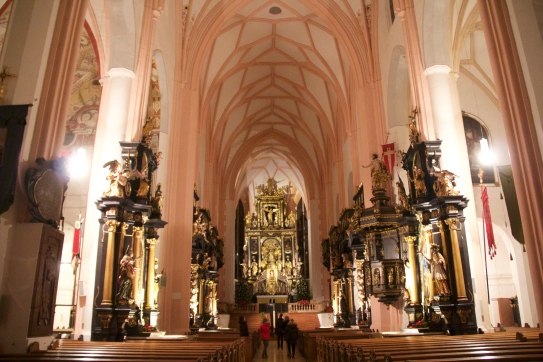
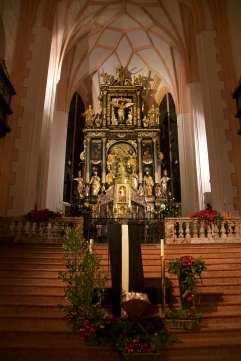 After we were done with Mondsee we hopped back on the bus where we were treated to a video documenting some of the filming behind The Sound of Music. I have to admit, it was nice to see clips from the movie paired with sights that we had just been to.
After we were done with Mondsee we hopped back on the bus where we were treated to a video documenting some of the filming behind The Sound of Music. I have to admit, it was nice to see clips from the movie paired with sights that we had just been to.
Once we finally arrived back in Salzburg (in total we had experienced about a two hour delay due to the snow) my Dad and I stopped by the Mirabell Gardens for one last photo op. The Mirabell Gardens is where they filmed most of “Do-Re-Mi,” though you honestly can’t tell from my pictures because yup, you guessed it, everything was covered in snow.
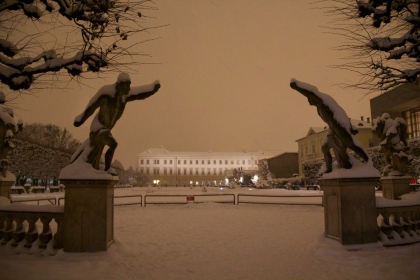

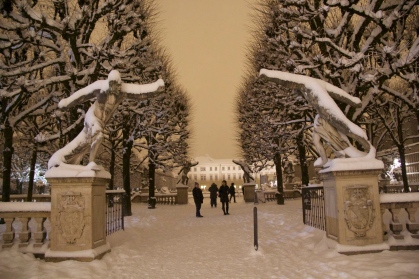 But even with all of the snow, it was still a very good day. I have to say that I left Salzburg the next morning a very happy camper.
But even with all of the snow, it was still a very good day. I have to say that I left Salzburg the next morning a very happy camper.
